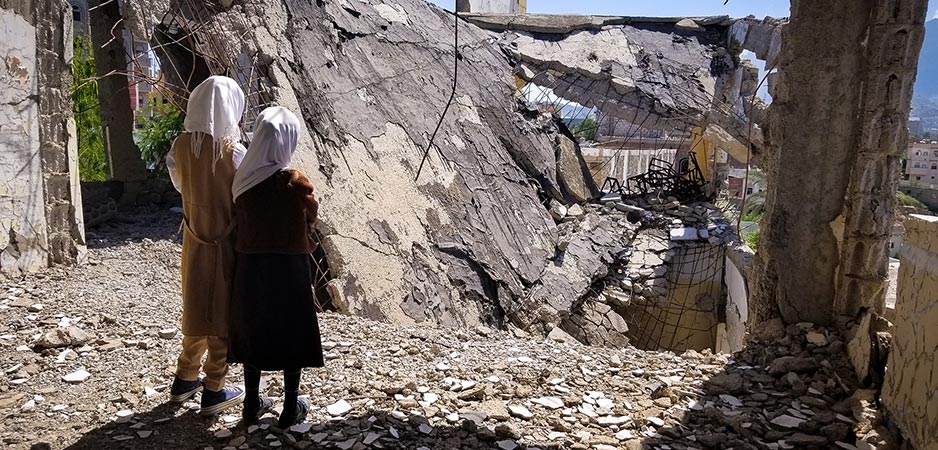March 25 marked the fifth anniversary since a Saudi-led coalition of Arab states, with direct support from the US, launched its campaign of airstrikes against the Houthi rebels in Yemen. The air campaign has gone hand-in-hand with an effort by Saudi and Yemeni forces opposing the Houthis to regain territory from the rebels. The Houthi movement, which emerged in 1994 in northern Yemen and whose supporters normally adhere to the Shia Zaidi sect of Islam, started fighting against the central government in Sanaa in 2004.
When in 2015 Saudi Arabia decided to intervene more directly in the conflict raging beyond its southern border, the Houthis had already taken control of the main urban center in the south of the country, the port of Aden. However, they were soon forced to retreat from the city.
Can the Saudi Call for Ceasefire in Yemen Work?
Nevertheless, five years later, the Houthis still control large swaths of territory in the west of Yemen, where most of the population lives. The Houthi siege of Taiz in the southwest has continued unabated, and in recent months the rebels have advanced in al-Jawf, a province northeast of Yemen’s capital Sanaa, and moved closer to control Marib province. Marib is not only oil-rich, but is also the stronghold of the internationally recognized government of exiled President Abd-Rabbu Mansour Hadi.
Saudi Failure
After five years of conflict, the humanitarian situation in the country can only be defined as catastrophic. According to the Armed Conflict Location & Event Data Project, more than 112,000 people have been killed in the war, including 12,600 civilians. While the Houthis are responsible for a fair share of the atrocities committed in Yemen, most of the civilian deaths can be attributed to indiscriminate bombing carried out by the Saudi-led coalition. Already in 2018, the UN warned that Yemen was on the brink of facing the “world’s worst famine in 100 years.”
Critical as the situation in Yemen had been in the tumultuous years following the downfall of long-time ruler Ali Abdullah Saleh in the wake of the Arab Spring, the Saudi-led intervention in 2015 complicated matters even further. The Saudi and Emirati engagement in the war added a new layer of complexity to a conflict in which intra-Muslim division, regional identities, competition for scarce resources, and tribal rivalry were prominent factors. Iran’s assistance to the Houthis is certainly limited, and describing the conflict in Yemen as a proxy war between regional rivals would be far-fetched. However, Iran’s role in the conflict has raised the stakes for Saudi Arabia.
When we confront the stated objectives of the Saudi-led coalition in launching Operation Decisive Storm with the situation on the ground five years later, it is evident that the offensive was everything but decisive, at least not in the intended sense. We may leave aside all the claims about protecting the Yemeni population and restoring Hadi’s legitimate government. The high number of civilian casualties caused by the coalition’s airstrikes proved the hypocrisy of the first claim, while the increasing subordination of President Hadi to Riyadh’s whims eroded even further his legitimacy within Yemen.
Even though the intervention in Yemen was inadequately planned, the rationale behind Decisive Storm had clearly much to do with two major concerns. On the one hand was the fear of Iran-aligned Houthis establishing a permanent presence in the strategic entrance to the Red Sea. On the other hand lay addressing the threat represented by the rebels’ capacity to carry out strikes in southern Saudi Arabia. Five years after the operation’s inception, the Houthis control the northern section of Yemen’s Red Sea coastline, and their drone attacks have grown in sophistication. The September 2019 strike on two major Saudi oil facilities was probably not carried out by the rebels in northern Yemen. However, the Houthis are reported to be using newer and deadlier drone models. As the attacks have grown bolder, they have proven able to target — although with little accuracy — the Saudi capital, Riyadh.
Quagmire
Yemen has become a quagmire for Saudi Arabia. This description appears quite illustrative, since the more Riyadh has engaged in Yemen military, the further it has found itself from achieving its vaguely-defined objectives. It is easier to start a war than to find a way out of one, and the de facto Saudi ruler, Crown Prince Mohammed bin Salman, is learning the lesson the hard way. This is especially true because the centralization of power in his hands in recent years makes it very difficult for bin Salman to spread the blame for the failing campaign in Yemen.
History could have taught the crown prince in advance that neither he nor his kingdom were unlikely to emerge in a stronger position after intense military engagement in Yemen. As thoroughly examined by the work of the scholar Asher Orkaby, the 1962-68 Yemen Civil War that put an end to the theocratic institution of the imamate in northern Yemen showed the rather limited advantages of foreign military superiority in the highlands north of Sanaa. The troops and planes sent by Egypt’s president, Gamal Abdel Nasser, had a hard time in trying to uproot tribal fighters supporting the last imam from the caves where they hid.
Airstrikes and chemical attacks were not enough to implement the revolutionary project Nasser envisioned for Yemen. In fact, the new Yemen Arab Republic, consolidated after the end of the civil war, was essentially the result of a compromise between the Yemeni pro-Nasserites and the monarchists who had been battling each other.
Whereas nowadays the Houthis control a territory that goes far beyond their mountainous stronghold in Sadah, in the event of serious military defeats in other areas — something that seems unlikely in the short run — they could always retreat to the north, where geography plays into their asymmetric warfare strategy and the population is more supportive of the rebel group. This would definitely prevent the Saudis from imposing a conclusive end to the war.
A Cynical Excuse
There are solid reasons to argue that the Saudi leadership has by now realized it cannot emerge from Yemen victorious. The withdrawal of Emirati troops from southern Yemen at the end of last year, along with the infighting between southern separatists and troops loyal to President Hadi that had previously focused on fighting the Houthis, weakened Saudi Arabia’s position. A vote in US Congress in April 2019 to end support for the Yemen War is also a factor to be taken into account. While US President Donald Trump has stopped the resolution from having an effect so far, it might signal a more restrained future US engagement with Riyadh if Trump is not reelected later this year.
Saudi Arabia and the Houthis engaged in back-channel talks in late 2019, making a compromise in the near future a real possibility. The ceasefire announced by the Saudi-led coalition last week has been violated by both sides, but incentives remain for the warring parties to engage in de-escalation. Saudi Arabia has been spending at least $5 billion every month since the beginning of the conflict in Yemen — an amount it can hardly afford considering the dramatic fall in oil prices amid the COVID-19 pandemic.
The Houthis, who are on the military offensive around Marib, could soon have a stronger position to negotiate from. However, the rebel group has often needed to resort to coercion and force to impose its rule in the areas it controls. Rising prices, corruption and political repression have contributed to the Houthis’ inability to win the hearts and minds of a considerable part of the Yemeni population. Arguing that the Houthis have imposed new restrictions on the international delivery of aid to the areas under their control, the US is planning to cut the majority of humanitarian assistance to Yemen. The Houthis badly need this aid in order to maintain the uneasy calm in the rebel-held regions.
The situation could further deteriorate if COVID-19 spreads after the first case was reported days ago. The recent ceasefire announced by Riyadh has in fact been framed as a response to UN calls for a cessation of hostilities in the context of the coronavirus pandemic. After bombing Yemeni civilians for years, Saudi leaders may use COVID-19 as a cynical excuse to pave the way for a progressive exit from Yemen. If Yemen is ever to go back to a semblance of peace, it is necessary, but not sufficient, for Saudi Arabia to realize that it cannot emerge victorious from this quagmire.
The views expressed in this article are the author’s own and do not necessarily reflect Fair Observer’s editorial policy.
Support Fair Observer
We rely on your support for our independence, diversity and quality.
For more than 10 years, Fair Observer has been free, fair and independent. No billionaire owns us, no advertisers control us. We are a reader-supported nonprofit. Unlike many other publications, we keep our content free for readers regardless of where they live or whether they can afford to pay. We have no paywalls and no ads.
In the post-truth era of fake news, echo chambers and filter bubbles, we publish a plurality of perspectives from around the world. Anyone can publish with us, but everyone goes through a rigorous editorial process. So, you get fact-checked, well-reasoned content instead of noise.
We publish 2,500+ voices from 90+ countries. We also conduct education and training programs
on subjects ranging from digital media and journalism to writing and critical thinking. This
doesn’t come cheap. Servers, editors, trainers and web developers cost
money.
Please consider supporting us on a regular basis as a recurring donor or a
sustaining member.
Will you support FO’s journalism?
We rely on your support for our independence, diversity and quality.






